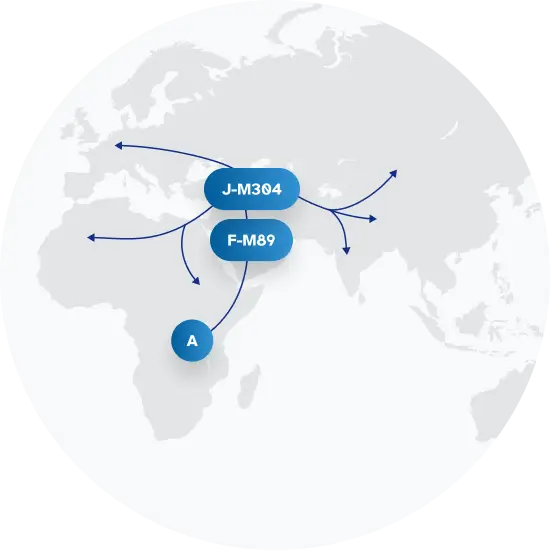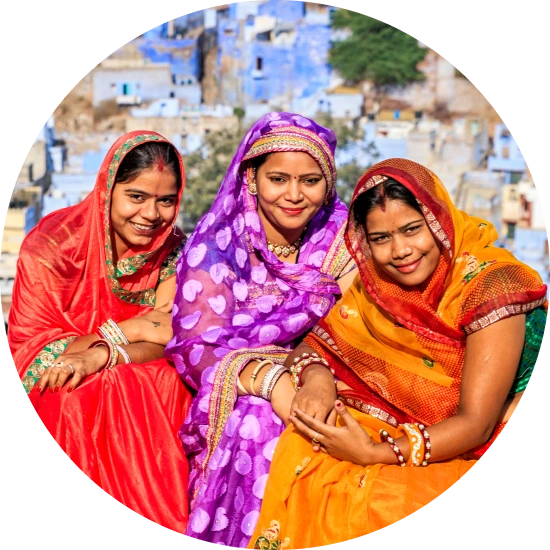Explore the Family Name Ram
How common is the last name Ram in the United States?
Based on the Decennial U.S. Census data, the popularity of the surname Ram has seen a significant increase between 2000 and 2010. In terms of ranking, it moved from the 10,629th spot in 2000 to the 8,547th position a decade later, reflecting an increase of approximately 19.59%. The count of people bearing this surname also rose significantly by 39.3%, from 2,766 individuals in 2000 to 3,853 individuals in 2010. Consequently, the proportion of individuals with the last name Ram per 100,000 people increased by 27.18% over the same period.
| 2000 | 2010 | Change | |
|---|---|---|---|
| Rank | #10,629 | #8,547 | 19.59% |
| Count | 2,766 | 3,853 | 39.3% |
| Proportion per 100k | 1.03 | 1.31 | 27.18% |
Race and Ethnicity of people with the last name Ram
On the ethnic identity front, the Decennial U.S. Census data reveals that the majority of individuals with the last name Ram identify as Asian or Pacific Islander. The percentage of this group grew from 54.05% in 2000 to 61.72% in 2010. Individuals identifying with two or more races saw a decrease of 44.62% during the same period. The percentage of White individuals decreased by 14.56%, while the Hispanic community saw a modest increase of 8.84%. The proportion of Black individuals with the surname Ram witnessed a significant rise of 41.16% over the decade. The American Indian and Alaskan Native population remained relatively stable, with a minor increase of 5.80%.
| 2000 | 2010 | Change | |
|---|---|---|---|
| Asian/Pacific Islander | 54.05% | 61.72% | 14.19% |
| White | 17.1% | 14.61% | -14.56% |
| Two or More Races | 16.63% | 9.21% | -44.62% |
| Hispanic | 7.92% | 8.62% | 8.84% |
| Black | 3.62% | 5.11% | 41.16% |
| American Indian and Alaskan Native | 0.69% | 0.73% | 5.8% |
Ram ancestry composition
23andMe computes an ancestry breakdown for each customer. People may have ancestry from just one population or they may have ancestry from several populations. The most commonly-observed ancestry found in people with the surname Ram is Northern Indian & Pakistani, which comprises 17.1% of all ancestry found in people with the surname. The next two most common ancestries are Southern Indian & Sri Lankan (15.4%) and Southern Indian Subgroup (13.7%). Additional ancestries include Ashkenazi Jewish, British & Irish, Bengali & Northeast Indian, French & German, and Spanish & Portuguese.
Ready to learn more about your ancestry? Get the most comprehensive ancestry breakdown on the market by taking our DNA test. Shop 23andMe
| ANCESTRY BREAKDOWN | COMPOSITION |
|---|---|
| Northern Indian & Pakistani | 17.1% |
| Southern Indian & Sri Lankan | 15.4% |
| Southern Indian Subgroup | 13.7% |
| Other | 53.7% |

Possible origins of the surname Ram
Your DNA provides clues about where your recent ancestors may have lived. Having many distant relatives in the same location suggests that you may all share common ancestry there. Locations with many distant relatives can also be places where people have migrated recently, such as large cities. If a large number of individuals who share your surname have distant relatives in a specific area, it could indicate a connection between your surname and that location, stemming from either recent ancestral ties or migration.
Based on 23andMe data, people with last name Ram have recent ancestry locations in the United Kingdom of Great Britain and Northern Ireland and India.
| RECENT ANCESTRY Location | Percentage |
|---|---|
| Greater London, United Kingdom | 17.00% |
| West Yorkshire, United Kingdom | 17.00% |
| Merseyside, United Kingdom | 17.00% |
| Tyne And Wear, United Kingdom | 17.00% |
| Greater Manchester, United Kingdom | 17.00% |
What Ram haplogroups can tell you
Haplogroups are genetic population groups that share a common ancestor on either your paternal or maternal line. These paternal and maternal haplogroups shed light on your genetic ancestry and help tell the story of your family.
The top paternal haplogroup of people with the surname Ram is J-M172, which is predominantly found among people with European ancestry. Haplogroup J-M172 is descended from haplogroup J-M304. Other common haplogroups include L-M2481 and H-M2914, which are predominantly found among people with Central & South Asian and Central & South Asian ancestry. Other surnames with similar common haplogroups are: Siddiqui, Rehman, Das, Qureshi, Zaman, Syed, Chaudhry, Hussain, Ahmed, Sharma.
The most common maternal haplogroups of people with Ram surname are: M, H, M4_64. These most commonly trace back to individuals of European ancestry.
 Paternal Haplogroup Origins J-M304
Paternal Haplogroup Origins J-M304
Your paternal lineage may be linked to some of the first farmers
The first farmers in western Eurasia lived in the Fertile Crescent, a region of the Middle East stretching from the Nile Delta to the Tigris and Euphrates rivers. With their new technology, they were able to live more sedentary lives, support larger populations, and build civilizations. They also began to move rapidly outwards from the Middle East. One of the earliest regions they expanded into was Armenia, a crossroads between the Middle East and northern Eurasia that was transformed into a fertile landscape at the end of the Ice Age. In addition to their culture, some of the men involved in this early migration carried haplogroup J-M172. In fact, their arrival in the region left genetic signatures that can still be seen in the J-M172 lineages found in Armenian men today, especially in Ararat Valley, Gardman, and Lake Van.
Your maternal lineage may be linked to the ancient people of the Indian subcontinent
While Haplogroup M is widespread throughout South and East Asia, it is more diverse on the Indian sub-continent than anywhere else in the world. The high degree of diversity of M in India is likely tied to its ancient arrival here nearly 50,000 years ago. In addition to M2, which is found throughout the subcontinent, there are dozens of haplogroups branching off of M that exist in India. These branches are often connected to specific regions, tribes, or ethnic groups. For example, haplogroup M18 is found among the Oraon peoples of eastern India and Bangladesh, while haplogroup M41 is common among the Pardhan speakers of eastern India, and haplogroup M31a can be found on the Andaman Islands, just off the southeast coast of India.

What do people with the surname Ram have in common?
Spoiler alert: it's complicated. People with the same last name are usually no more genetically similar than a randomly sampled group of people from the same population. That said, people with the same surname are more likely to have similar ancestries than randomly sampled individuals. The reason is the tendency of people with similar cultural or geographical backgrounds to preferentially mate with one another. That's why people who share a surname may be more likely to share traits and tendencies in common than people within the general population. Check out the percentages below to see the prevalences of tastes, habits, and traits of people with your surname compared with prevalences among 23andMe users.
Preferences
Traits

Misophonia
When sounds made by others, like the sound of chewing or yawning, provoke strong emotional reactions in an individual.
"Ram" Surname 35.0%
23andMe Users 27.9%
Habits
Wellness

Migraine
A severe headache characterized by intense pain, sensitivity to light and sound, and often accompanied by nausea and vomiting.
"Ram" Surname 11.7%
23andMe Users 16.4%
Are health conditions linked to the last name Ram?
The short answer is that, if there is an association between surname and health, it's usually more about your ancestry than your name. Individuals with a given surname are no more genetically similar than the general population but often have similar ancestries. The populations of people associated with those shared ancestries often have sets of genetic variations, also known as alleles, in common. Some of those alleles are associated with a greater likelihood of developing certain diseases.
Disease variant frequency by ancestry
Disease allele frequencies in populations associated with the surname Ram are shown below. Important Note: not everyone with a disease allele will develop these health condition






